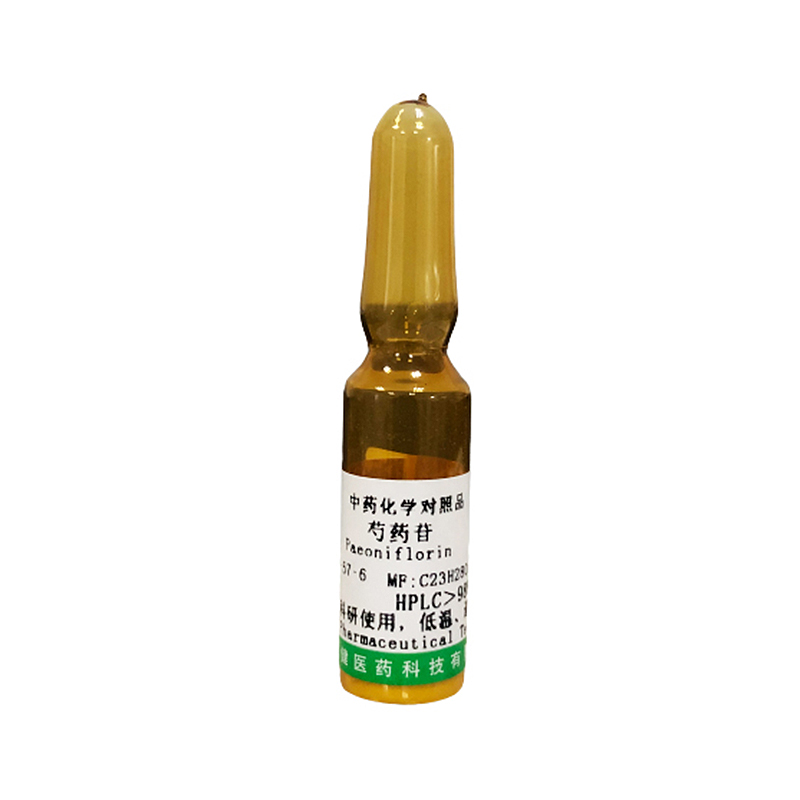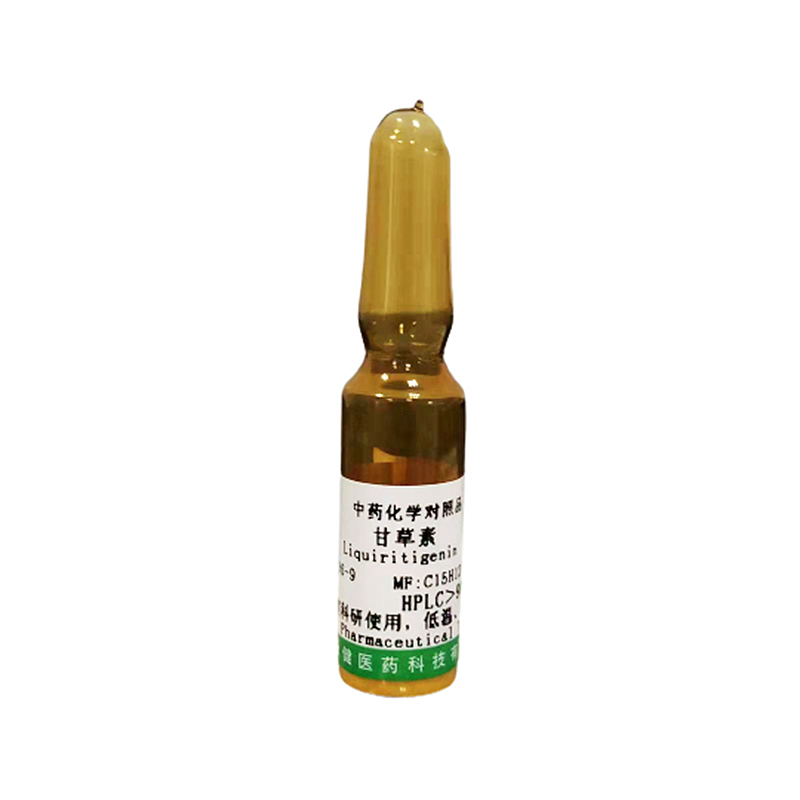Paeoniflorin CAS No. 23180-57-6
Essential Information
Also known as paeoniflorin, it is a pinane monoterpene bitter glycoside isolated from red peony and white peony. It is a hygroscopic amorphous powder. It exists in the roots of Paeonia, peony, purple peony and other plants of Ranunculaceae. The toxicity of this crystal is very low.
[chemical name] 5beta-[(Benzoyloxy)methyl]tetrahydro-5-hydroxy-2-methyl-2,5-methano-1H-3,4-dioxacyclobuta[cd]pentalen-1alpha(2H)-yl-beta-D-glucopyranoside
[molecular formula] C23H28O11
【CAS No】 23180-57-6
Purity: above 98%, detection method: HPLC.
[source] the roots of Paeonia albiflora pall, P. suffrsticosa Andr, P. delarayi Franch, a plant of Ranunculaceae,the content of radix paeoniae Rubr is the highest.
[Specification] 10%,20%,30%,50%,90% , 98%
[ Active Ingredient ] Total glucosides of Paeonia (TGP) is the general name of paeoniflorin, hydroxy paeoniflorin, paeoniflorin, albiflorin and benzoyl paeoniflorin, which is called TGP for short.
Physical and chemical properties
It is hygroscopic amorphous Tan powder (90% is off white powder)[ α] 16D-12.8。 (C = 4.6, methanol), tetraacetate is colorless acicular crystal, melting point: 196 ℃. Paeoniflorin is stable in acidic environment (pH 2 ~ 6) and unstable in alkaline environment.
Content Determination
Generally, method 1 and method 2 can also be used for detection. Method 1 is best used for high content production, which can help process personnel better judge the purity of products. The reference substance is easy to decompose after dissolution.
1.It was determined by high performance liquid chromatography (Appendix VI d). The chromatographic conditions and system suitability were tested with Octadecyl silane bonded silica gel as filler; Acetonitrile-0.1% phosphoric acid solution (14:86) was used as mobile phase; The detection wavelength is 230nm. The number of theoretical plates calculated according to paeoniflorin peak shall not be less than 2000. Preparation of reference solution: accurately weigh an appropriate amount of paeoniflorin reference solution and add methanol to prepare 60% paeoniflorin per 1ml μ G solution.
2.To improve the determination method of paeoniflorin in Radix Paeoniae Alba. Methods: the methods in Chinese Pharmacopoeia and the improved methods were compared. The mobile phase was methanol water (30:70) and the detection wavelength was 230nm. result; The linear relationship of this method is good (r = 0.9995). The average recovery is 101.518% and RSD is 1.682%. Conclusion: the improved method is simple and accurate, which can reduce the toxicity of organic solvents to human beings and environmental pollution, and provide a reference basis for the determination of paeoniflorin in practice.
Determination Method
Determination of paeoniflorin by HPLC
Scope of application: this method uses HPLC to determine the content of paeoniflorin in Guizhi Fuling pills.
The method is suitable for Guizhi Fuling pill.
Method principle: put the test sample into a conical flask, add an appropriate amount of dilute ethanol for ultrasonic extraction, cool it, shake it well, filter it, the filtrate enters the high performance liquid chromatograph for chromatographic separation, use the ultraviolet absorption detector to detect the absorption value of paeoniflorin at the wavelength of 230nm, and calculate its content.









